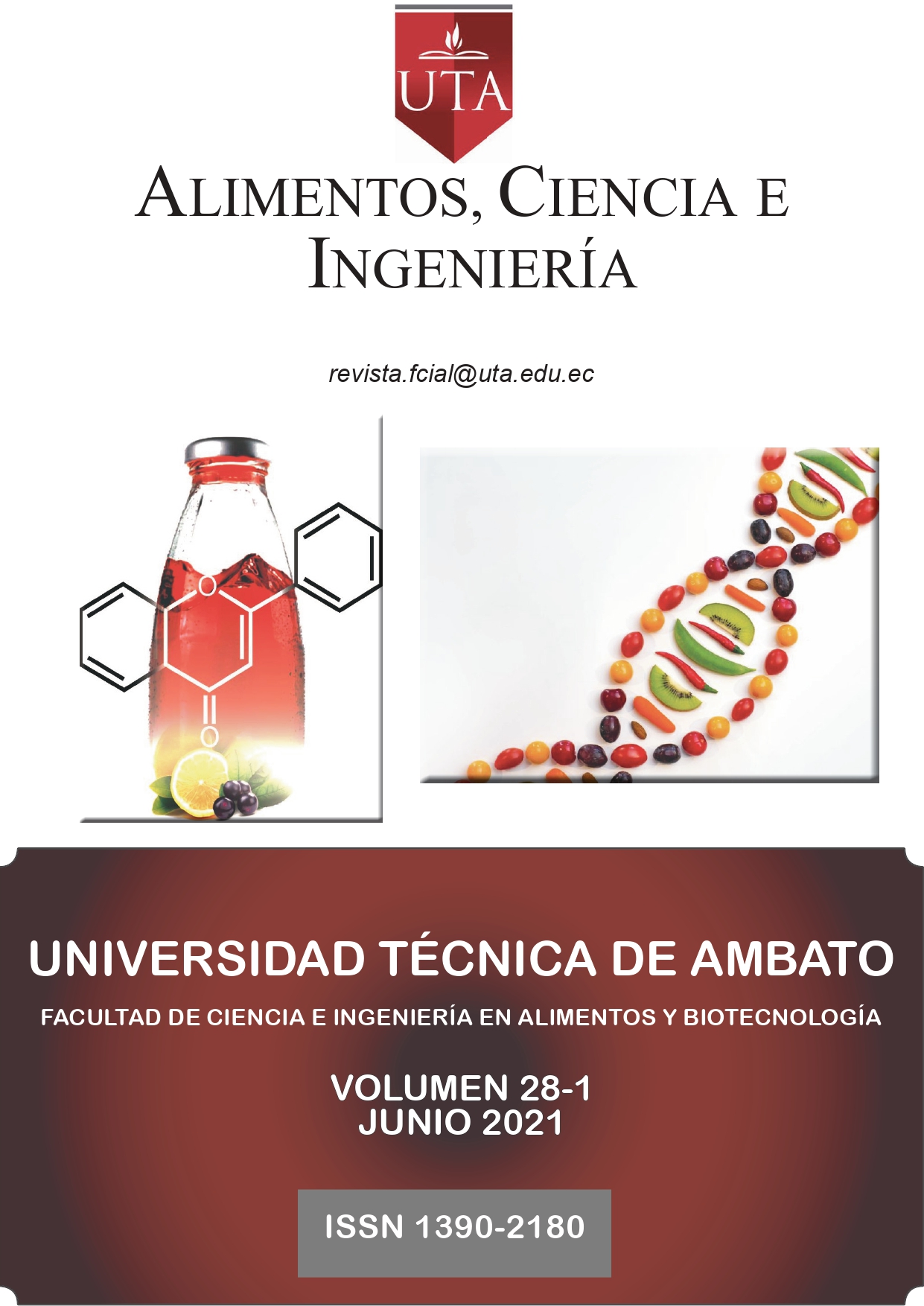PHYSICOCHEMICAL AND MICROBIOLOGICAL EVALUATION OF THE EXTRACTION OF OCA FLOUR BY THE OPEN TACHO METHOD
Main Article Content
Abstract
Flours have been fundamental for the elaboration of products with greater nutritional properties, which is why a physicochemical and microbiological evaluation of the extraction of goose flour by the open container method was carried out in order to increase its consumption. Fresh geese were used and in good conditions which used a sweetening time of 15 days exposed to the sun, then they proceeded to wash, disinfect and cut into flakes with a diameter of 2mm to subject them in a solution of citric acid at 0.1 % normal. Subsequently, the pre-cooking of the flakes was carried out in an open pan, a method that consists of applying heat at 91°C for 20 minutes with a pressure of 10.44 PSI. Finally, the goose flakes are taken to a drying process for 20 hours for their respective grinding and sieving until the flour is extracted to which the different analyzes will be made. The results presented by the goose flour were a pH of 7.43%, humidity 9.32%, ash 4.23%, protein 6.28%, fiber 2.98%, fat 0.83%, carbohydrates 77, 25%, which means that it complies with the physicochemical requirements established in the NTE INEN 616 standard, as well as its microbiological analysis since the count of cfu / g of coliforms, molds and yeasts was lower than the maximum permitted limits.
Downloads
Article Details

This work is licensed under a Creative Commons Attribution-NonCommercial 4.0 International License.
Aquellos autores/as que tengan publicaciones con esta revista, aceptan los términos siguientes:
a. Los autores/as conservarán sus derechos de copiar y redistribuir el material, bajo los términos estipulados en la Licencia de reconocimiento, no comercial que permite a terceros compartir la obra bajo las siguientes condiciones:
Atribución: debe dar el crédito apropiado, proporcionar un enlace a la licencia e indicar si se realizaron cambios. Puede hacerlo de cualquier manera razonable, pero no de ninguna manera que sugiera que el licenciante lo respalda a usted o su uso.
No comercial: no puede utilizar el material con fines comerciales.
Sin restricciones adicionales: no puede aplicar términos legales ni medidas tecnológicas que restrinjan legalmente a otros hacer cualquier cosa que la licencia permita.
References
Arguto, K., y Mero, E. (2011). Utilización de Harina de Arroz en la Elaboración de Pan. Guayaquil: ESPOL.
Barrera , V., Tapia , C., y Monteros, A. (2004). Raíces y Tubérculos Andinos: Alternativas para la conservación y usos sostenible en el Ecuador . Quito: Inatituto Nacional de Autónomo de Investigaciones Agropecuarias (INIAP).
Caracuel García, Á. (2008). Técnicas de cocción saludables aplicables a la alimentación mediterránea.
Chilig, C. (2013). Elaboración de harina de zanahoria blanca para utilizar en productos de panificación y definir niveles de aceptabilidad. Riobamba: ESPOCH.
Fraile, T., Morales, M., & Holle, M. (1999). Raíces y tubérculos andinos. Avances de investigación I. Lima, Perú: CONDESAN.
Meza, B. (2017). Caracterización fisicoquímica, fitoquímica y funcional de la harina de Khaya y Oca para uso industrial. Huancayo Perú: Universidad Nacional del centro de Perú. Facultad de Ingeniería en Industrias Alimentarias. Tesis de grado.
Miranda, V. (2013). Estudio de la oca y propuesta gastronómica de autor . Quito: Universidad Internacional del Ecuador. Escuela de Gastronomía. Trabajo de fin de carrera previo a la obtención de título de Ingeniero Gastronómico.
Mosquera, C. (2015). Estudio de la obtención de la harina de oca blanca (Oxalis tuberosa) y su aplicación en la elaboración de pan de molde por sustitución parcial de la harina de trigo. Quito, Ecuador: Universidad Tecnológica Equinoccial. Facultad de Ciencias de Ingeniería. Carrera de Ingeniería de Alimentos.
Sívoli, L. (2016). Carácterización fisicoquímica, funcional y nutricional de harinas crudas obtenidas a partir de diferentes variedades de yuca. Red de Revistas Científicas de América Latina, el Caribe, España y Portugal.


